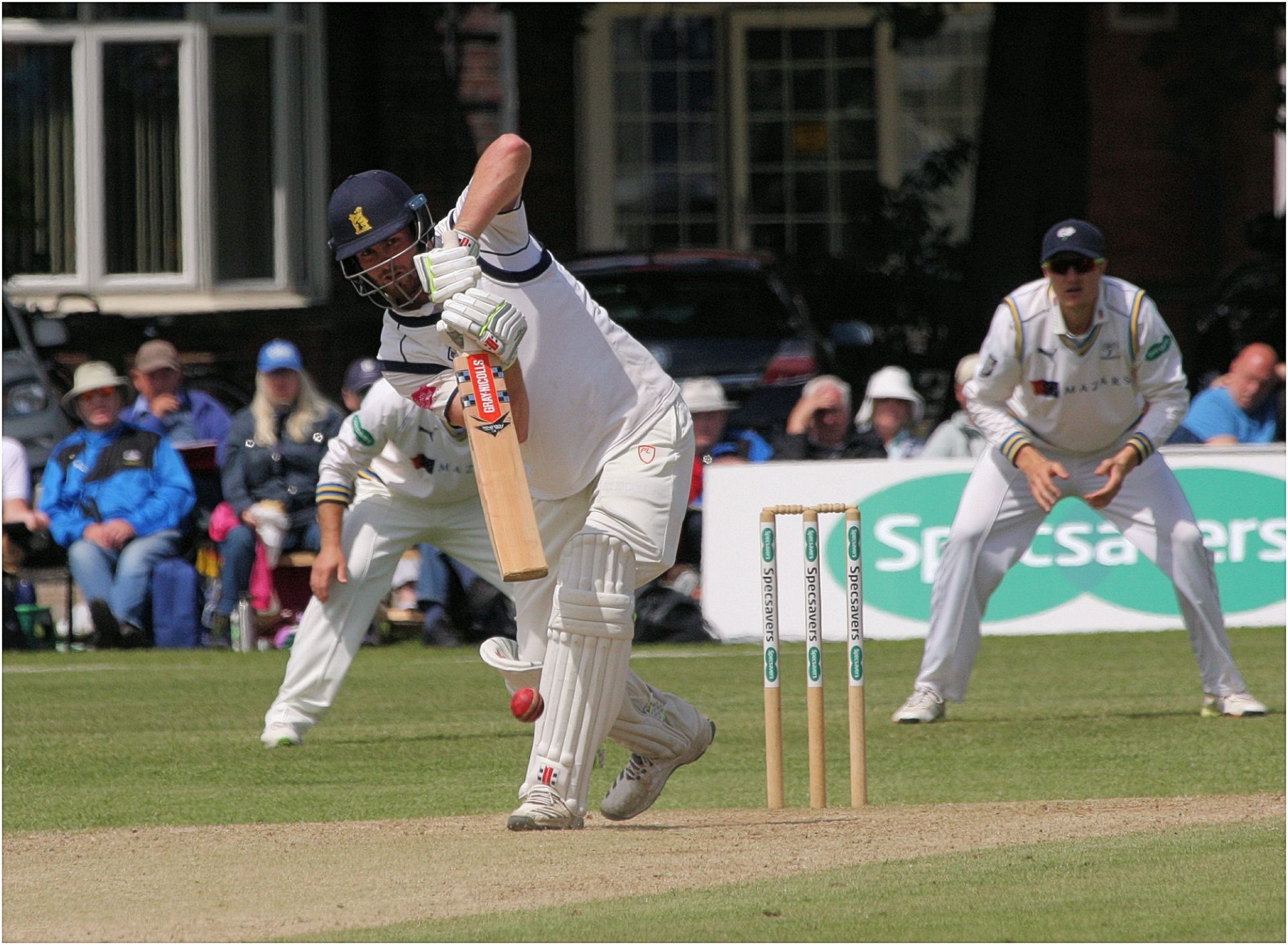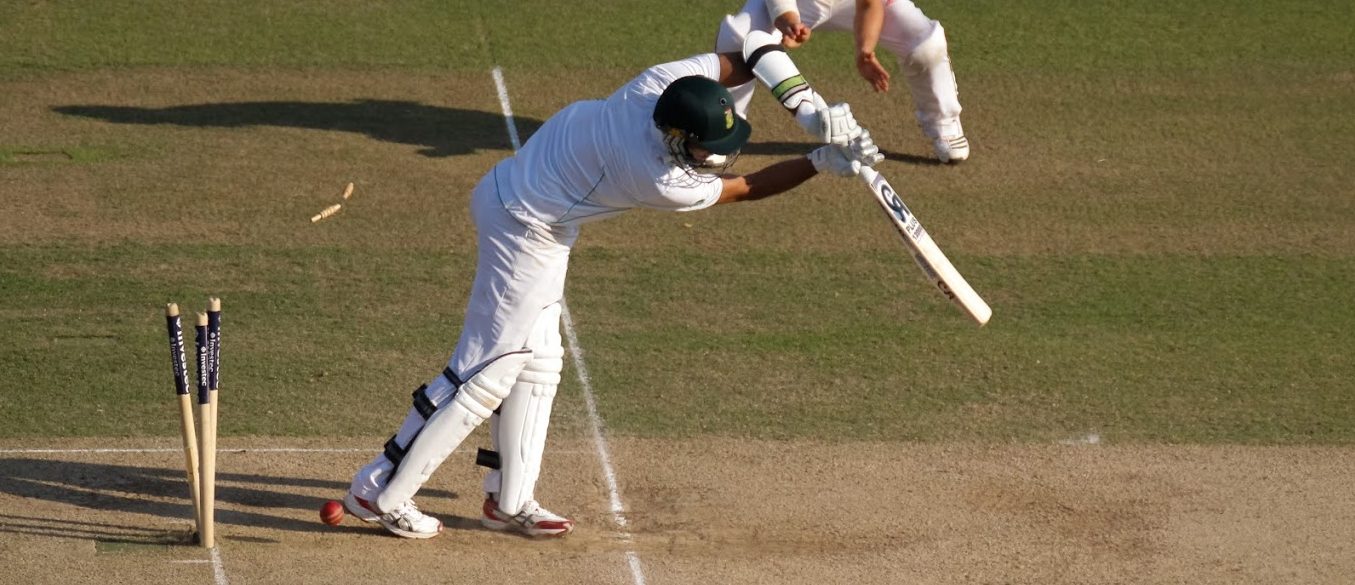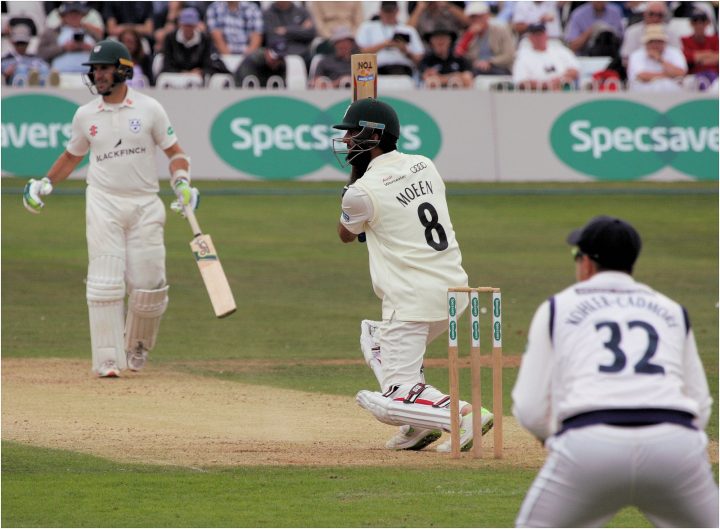Today we welcome Peter Zitterschlager to TFT. I really enjoyed this…
Should the unthinkable happen, and future generations spurn Test cricket, what do they lose? Much of the game’s equivalent of flora and fauna, I dare say. Indeed, if the world wildlife fund had its eye on cricket’s welfare, it would catalog a distressing number of endangered aspects.
The list would probably come out like this:
1. Textbook batting. Status: vulnerable
Should T20 be cricket’s only environment, textbook batting will lose much of its habitat. In the 5-day game, it flourishes in a range the size of the Amazon, but in a post-test dystopia, most rainforests will be cleared for domestic T20 plantations.
Cricket’s wonderful biodiversity of sumptuous drives and elegant strokes will be consigned to small pockets, only having currency when teams lose early wickets and must knuckle down to settle for something competitive.
So if we were to muse that textbook batting is cricket’s equivalent of say … the great apes … its days of dominating the canopy will be over. It will become one of the less common occupants of cricket’s new topography.
But it could have been worse: it could have been consigned to a bit part like Clive in ‘Every which way but loose.’
2. Short pitched bowling. Status: critically endangered
Cricket’s big cats, sustained spells of short-pitched bowling, will be left toothless in this age. Never again will we see cricket’s equivalent of a lion pack predating its quarry. Lillee and Thommo, the Windies pace quartets and Allan Donald working over the Waugh’s … all that bumper-centric menace will be no-balled out of existence.
Sustained hostility with the short ball will have no place in an environment where the parameters are tightened on legitimate deliveries. All that will remain is the occasional searing spell, which will play like a truncated cameo.
In the post-test age, Cricket’s big cats will feel less like they’re predating, and more like they’re scavenging. They will feed mostly on miscued slogs to cow corner. And big cats are far from their most majestic stumbling upon carrion; they are at their most majestic making batsmen cower.
3. Maidens. Status: near threatened
The maiden, a drab weed which flowers on occasion, faces an uncertain future. The dot ball will encroach into most of its native territory and it will become as rare as some orchids.
On the upside though, the few species that do survive will flower spectacularly, speckled by wondrous slower balls and back of the hand oddities.
4. Shouldering arms. Status: critically endangered
The leave outside off stump also faces an uncertain future. The little we see of it will be muted by an urgency to score.
In test cricket, shouldering arms is a decisive manoeuver; one engaged by circumspect batsmen shrewdly playing the percentages. In T20, however, it appears a missed opportunity to score; one engaged by the fatalistic, the defeated or the inept. Indeed, it’s not hard to imagine that it will coached out of batting’s repertoire once T20 becomes more scientific.
The leave, if it survives, will never again look balletic; it will look ungainly. It will have the look of a flightless bird fleeing an introduced carnivore, which can outrace it in little more than a trot.
5. Silly short leg. Status: facing extinction
Bat pad catchers are almost certainly facing extinction. Sadly, never again will we see their acrobatics. They are the game’s bats, catching ricocheting kookaburras using a combination of peripheral vision and sonar-like nous. In an age where balls are mostly skied to cow corner, they will give way to deep mid wicket and long on.
6. 3rd, 4th and 5th slip. Status: facing extinction
3rd, 4th and 5th slip – the exciting siren of a bowling team on the attack – are surely casualties of this paradigm shift.
3rd, 4th and 5th slip don’t save boundaries in the deep; they are extravagances when runs don’t count and wickets are everything.
But that all changes in this construct. Like the species of brown bears, which catch spawning salmon in white water rapids, they are facing a world where the river runs dry.
7. The battle between bat and ball. Status: unbalanced
The respectful dialogue between bat and ball struggles to stay civilized when scoring strains for 10 an over. Making runs at this rate requires a screaming argument.
In Test cricket, the good length ball in the corridor is met by batsmen respectfully. It’s as though their forward defense says, “Nah nah, good point; I can’t argue with that; scoring off that would be risky.”
In T20, however, batsman aim to be contemptuous of every ball, including yorkers. Their agricultural slogs scream, “I don’t do respect; I do sixes!”
The battle between bat and ball will have its place, though. When early wickets fall, it will couple with textbook batting as batsmen knuckle down for a competitive score. Indeed, this might even resemble old school cricket.
So, the battle between bat and ball? Is it cricket’s balance between predators and grazers? Or perhaps it’s the entire ecosystem? Either way, if you get the balance wrong, the whole thing collapses. Just as it did on Easter island.
Eight: Long winded anecdotes by the likes of Skull in slow periods of play. Status: critically endangered.
Skull, and Blowers in old blightly, are at their comedic best when cricket is meandering. How will their kind fare when the game is no longer calibrated to meander?
Hm, it’s possible that one-sided matches in the future will fill the breach? Should the match be a blow out, you can see Skull using that as a window for his mischief. But you can’t help but feel it wouldn’t be the same. The listener would be tuning out under this template, whereas in slow passages, he or she is still engaged. Worrisomely for cricket’s characters, all of this points to not being able to roam as freely as they once did.
9. Bowling into footmarks; cricket in creams; declarations; follow ons; reverse swing; double and triple hundreds; heroic tailenders batting out entire sessions to force draws. Status: uh-oh.
This group are facing a mass extinction event. They will all be vaporized as though the cricketsphere has been struck by a meteor. We can only hope their bones fossilize as well as the dinosaurs.
10. Finally, what of the Ashes and the context with 150 years of records? Status: ???
Well, we still can have a T20 Ashes, I guess? And context has to roll with the punches like everything else; so, context, schmontext. But a T20 Ashes? Hmm, that’d be like replacing whales with guppies; and there’s just no way guppies cut it as sushi for the likes of Japanese scientific research.
Peter Zitterschlager









So sad and true …the need for instant gratification …and another example of society,s declining patience and and respect for tradition
I never quite understand the “respect for tradition” argument. For anything to change at all, there has to be some erosion of respect for tradition–and very often, some damage done to those who are involved in maintaining the tradition.
If there were respect for tradition, we wouldn’t be using knives and forks, or driving motor vehicles (I once lived near a vast bike factory which employed thousands and which no longer exists), or writing posts on the Internet rather than letters to an editor, or communicating on a mobile rather than sending a letter, a telegram or our servant. We’d be arguing for the right to smoke ourselves to death, for the restriction of the vote to the aristocracy, and for the right to rape our wives. In cricket, we’d be pining ourselves into depression for the Gentlemen vs Players game, for four-ball overs, for wickets with only two stumps, and worrying ourselves sick that Cricket West Indies was allowing black-skinned people to captain them and the MCC were allowing members with vaginas into the pavilion (probably without ties too!)
I can’t see why there’s any reason for anyone to have respect for tradition per se–which can very easily develop into the kind of mindlessness that it’s supposed to prevent. Personally I would like red-ball cricket to continue to be the main form (I very much like the idea of being calibrated to meander, although if the lack of it rids us of Blowers’s wearisome self-regard, then it can’t be all bad!) But the argument needs to be made on its merits I think. After all, there’s still a fair bit of respect for tradition in Britain: look at the reactions to the Queen’s death, or some people’s reaction to the idea of selling beer in litres!
Cricket it’s said, being a game that takes longer than any other and so displays more features of character and personality, reflects the age better than any sport and always has done. It never stands still so the only ‘golden age’ is the present one. Go back a hundred years to the traditional ‘golden era’ and it would have been almost unrecognisable to us. Us old fogies may not fit in to the direction we see the game taking but that could equally be said of society as a whole, which many feel is moving at 100mph in the wrong direction, so rather proves the point. I don’t bemoan future generations messing with the game to make it more accessible with the dumbing down of specialisation evident in entertainment generally, as society becomes part of the ‘life is loud’ party experience.
Incidentally I’m reading the autobiography of the Warwickshire fallen angel Paul Smith, which points to these trends decades ago.
Very amusing piece of writing that makes it’s point vividly. But such a sad and likely true enough analysis.
Sufficient for us perhaps that at least we got to enjoy all those epic last wicket stands and fearsome attacks with umbrella fields. I think the slow demise of test cricket will see me out(at age 82). Times do change. Are there any readers who are nostalgic for songs round the piano or a day at the jousting? It was no doubt tragic for some that those delights disappeared.
Perhaps there will be no room or demand for long cricket matches in thirty years and the cricket public of those days will never miss what they never had. It’s already happening in the West Indies. It’s not for us throwbacks to regret it. It’s the way of the world.
Yes, I must admit, I do miss the jousting !
More thought gone into that than my dissertation. So far, anyway.
I would pick out one point – im surprised that anti feminist term ‘maiden over’ hasn’t been seen off yet. It must be a trigger point for some sensitive types. Non-binary set of six has a ring to it.
Maidens could easily be replaced by bachelors 😆 or maidelors.
Didn’t he use to be something big in the EU?
I guess they hold many recordst